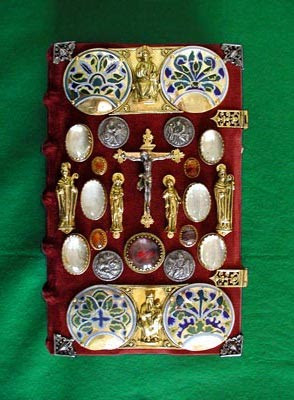 |
| Viewfinder, 2006 |
"The subjects are bit players who, for a brief time, found fame
printed on the glassy surface of dime novels. My mitts and an
a xacto knife work together to persuade skirts and skinflints
to return to the stage for one final performance in a slightly
different production. The spotlight is aimed at guns and gams
long enough to immortalize them on yet another flat, glossy
surface - film." Thomas Allen
Thomas Allen cuts, crimps, and creases the figures from vintage paperbacks and folds them up and out of their covers to create "tableau vivants", French for "living pictures". The lascivious images are a homage to the golden age of pulp fiction, cult westerns, and film noir.
 |
| Stranger, 2006 |
Influenced by pop-up books and the classic View-Master stereoscopic toy, figures and images are re-imagined and made into dioramas. He creates new stories from old books, by rearranging them into 3D scenes, carefully stages and lights them, then photographs the new scene. Thus he takes 2D objects, renders them into 3D ones, then reverts them back into 2D ones, albeit with a new tale to tell.
 |
| Tangle, 2008 |
He purposely uses depth of field and a shallow focus when he photographs. This makes them seem like the audience is looking through a View-Master.
 |
| Bookend, 2004 |
Allen got his BFA from Wayne State University in Detroit. He then went to the University of Minnesota to get his MFA in 1996. He's received a number of grants and fellowships, including the prestigious McKnight Artist Fellowship for photographers in 1997.
 |
| Thomas Allen at work. |
His idea for his photography came from a fellowship he received for works that used anatomy books to tell myths. He realized that by cutting up a book and pulling the cut-out up he could make something similar to a pop-up book.
 |
| Wish, 2006 |
At first he started using Photoshop and making figures he would print onto card stock. He'd then cut out the figures and place them over books, using light to hide some of his "tricks". He then realized he could just cut the book directly and light the resulting "image".
 |
| Stacked, 2004 |
Allen soon started using more than one book, blending story elements. He uses pulp covers because of their illustrations. Newer ones are too stylistic, so he prefers using the older ones.
 |
| Spring, 2004 |
Since many covers have nothing to do with the words inside, but are made to sell books, he sticks to just "reading" the covers. He never reads the books, which he often finds funny, but he wants to keep his initial reactions to the covers intact.
 |
| Tale, 2004 |
Since his work is not about the stories inside the books he uses, the books covers are just mined for the visual effects he seeks. Sometimes he has an idea in mind and searches for images, but a lot of the time his work is spontaneous.
 |
| Topple, 2005 |
Allen used to dig through used bookstores to find the books. He tried eBay, but the bidding got too high. He finally found a website, which he won't disclose, that lists available pulp covers. He checks that site, then goes to Alibris and Bookfinder.com to buy them.
 |
| Knockout, 2006 |
His works have one word titles. He feels if he has to explain his photos, then they are not working. He doesn't like the term "untitled". People are left to their own interpretations.
 |
| Distraction, 2006 |
Thomas Allen has found a new way to satisfy his interests in pop-up books and pulp fiction. His creativity allows the rest of us to re-experience the thrill of a good pulp cover. This clever and successful photographer offers us a taste of the past with a fresh flavor.
***************
Images courtesy of the artist's site.
For a look at more of his work check this out.
*******************************










































